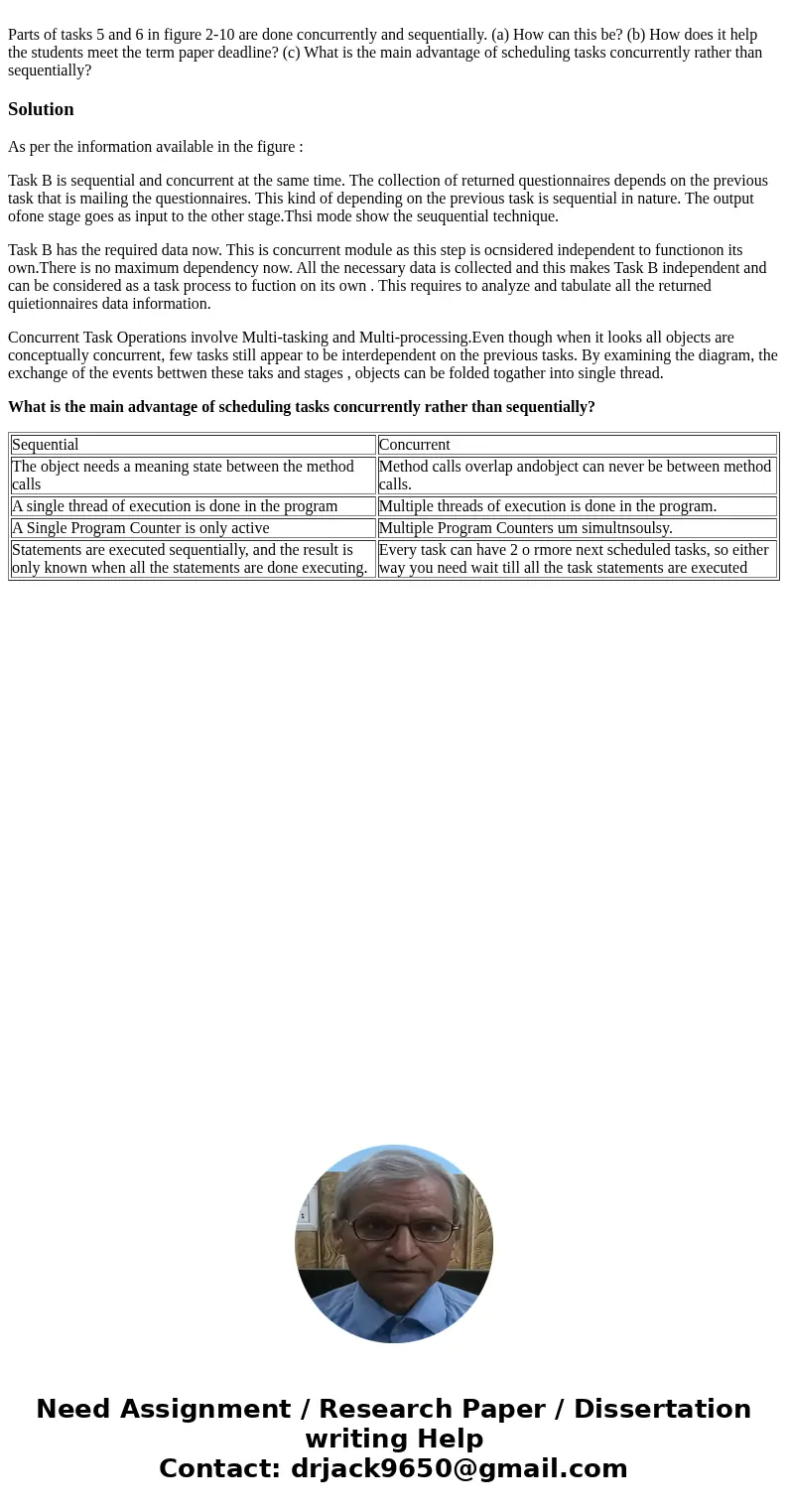Parts of tasks 5 and 6 in figure 210 are done concurrently a
Solution
As per the information available in the figure :
Task B is sequential and concurrent at the same time. The collection of returned questionnaires depends on the previous task that is mailing the questionnaires. This kind of depending on the previous task is sequential in nature. The output ofone stage goes as input to the other stage.Thsi mode show the seuquential technique.
Task B has the required data now. This is concurrent module as this step is ocnsidered independent to functionon its own.There is no maximum dependency now. All the necessary data is collected and this makes Task B independent and can be considered as a task process to fuction on its own . This requires to analyze and tabulate all the returned quietionnaires data information.
Concurrent Task Operations involve Multi-tasking and Multi-processing.Even though when it looks all objects are conceptually concurrent, few tasks still appear to be interdependent on the previous tasks. By examining the diagram, the exchange of the events bettwen these taks and stages , objects can be folded togather into single thread.
What is the main advantage of scheduling tasks concurrently rather than sequentially?
| Sequential | Concurrent |
| The object needs a meaning state between the method calls | Method calls overlap andobject can never be between method calls. |
| A single thread of execution is done in the program | Multiple threads of execution is done in the program. |
| A Single Program Counter is only active | Multiple Program Counters um simultnsoulsy. |
| Statements are executed sequentially, and the result is only known when all the statements are done executing. | Every task can have 2 o rmore next scheduled tasks, so either way you need wait till all the task statements are executed |

 Homework Sourse
Homework Sourse